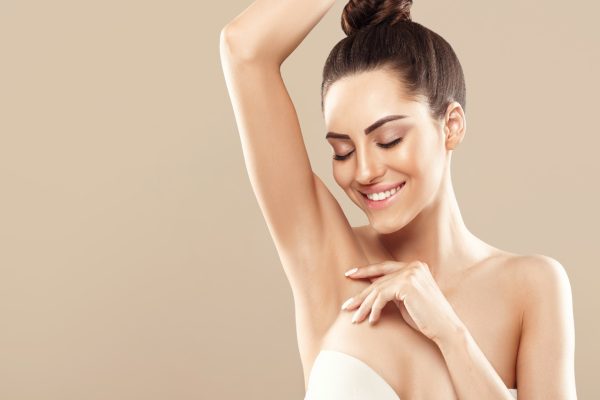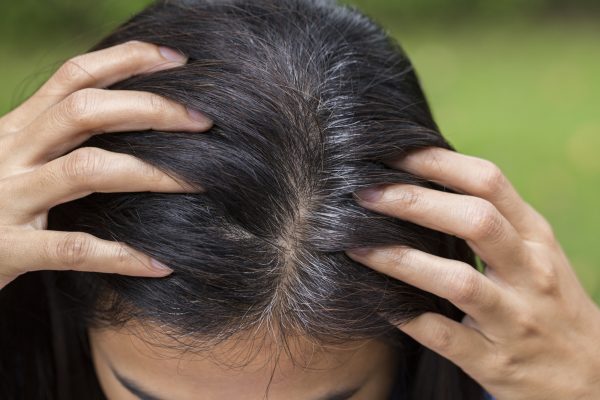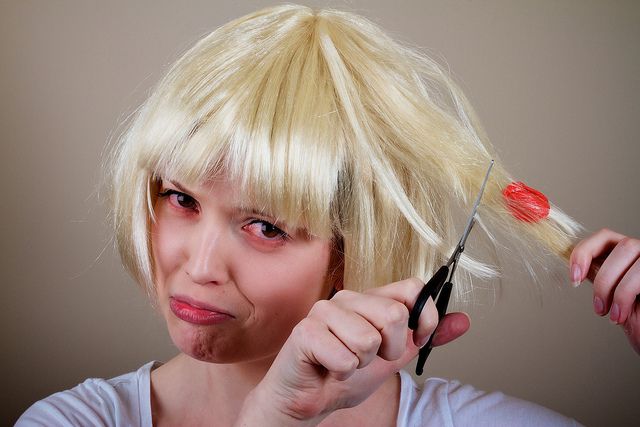The salon is a terrific location to get your hair dyed, but what about keeping your beautifully colored locks? What you need are a few recommendations to help you maintain your colored hair at home without spending a fortune!
Coloring your hair exposes your hair to chemicals, making it prone to dryness, damage, and breakage. Furthermore, without proper upkeep, color-treated hair may quickly become lifeless and drab.
This post contains basic and simple hair care recommendations to keep your hair healthy and protected. Continue reading to learn more!
Here Are The Best Tips for Taking Care of Colored Hair at Home
1. Wait 3 days before washing newly colored hair.
If you wash your hair within 72 hours of dyeing it, the color will wash off quickly. The chemical procedure used in hair dyeing leaves the cuticles of the hair exposed and vulnerable to harm. Hair colors change the structure of the hair chemically. This hair is porous and more prone to damage.
2. Use a color-safe shampoo.
The shampoo you use has a significant impact on the brilliance of your hair color. When you do wash your hair, use a shampoo designed specifically for color-treated hair. It will both preserve and regulate your hair’s natural pH. Color-safe shampoos keep your hair color vibrant and prevent it from fading too rapidly. They also include moisturizing and nourishing elements that help to rebuild and repair your hair. Shampoos containing harsh chemicals like sulfates and alcohol should be avoided. They will remove your hair’s color and hydration.
4. Apply Dry Shampoo
You can’t compromise on cleanliness, so use a color-safe dry shampoo to remove oil, grime, and product build-up from your hair between washes. This will remove the filth and muck without removing the color from your hair due to repeated shampooing.
5. Take Care of Your Colored Hair
You must apply a conditioner every time you shampoo your colored-treated hair. Check to see if the conditioner is likewise color-safe. These conditioners provide a barrier of protection on the hair strands. This helps to seal the cuticles and trap in moisture, giving your hair gloss, volume, and luster. As a result, it leaves your hair soft, healthy, and shiny.
6. Avoid Damp Air Exposure
Long showers and humidity should be avoided since wet air causes hair color to fade. While bathing, wear a shower cap and avoid getting your hair wet too often. Use anti-humidity serums to protect your hair, especially during the rainy season.
7. Avoid Extreme Temperatures
Showers should be cold or lukewarm, since hot water can damage and fade color-treated hair. This is also true for heat styling appliances like curling irons, straighteners, and blow dryers. As the heat breaks up the cuticle, the outer protective layer of the hair is damaged, and the color flows out quickly. When styling your hair, use a thermal protectant hair serum or spray.
8. Smooth and add luster to colored hair using deep conditioning treatments.
For added shine, treat your color-treated hair strands to a deep-conditioning treatment once a week. Brush the treatment through damp hair from roots to tips. Pull your hair into a bun and pin it in place, or wrap it in a soft towel and let it there for 30 minutes. When you rinse it out, your hair will be softer and shinier.
Another unintended consequence of dyeing your hair is protein damage to your hair (1). When your hair begins to strain and break off, you know it’s in desperate need of protein. When wet, it may also feel a little squishy. The only way to correct this is to feed your hair protein. You may use either store-bought protein treatments or homemade hair masks.
9. Use leave-in conditioners to protect color-treated hair.
Silicones in leave-in conditioners produce a protective coating around the hair shaft (1). This reduces sun damage and soothes post-processing frizz. They also assist to protect your hair from the damage caused by heat styling appliances. A leave-in conditioning treatment can also help untangle and protect your hair from environmental aggressors. Look for leave-in conditioners designed specifically to preserve color-treated hair. This is especially necessary if you use blowdryers, curling irons, or straightening irons regularly, or if you spend a lot of time near a heater or in the sun.
10. Apply a hot oil treatment to color-treated hair to add shine.
Hot oil treatments are simple to do at home and enhance the luster of color-treated hair. Cover your hair with a shower cap after applying the hot oil to clean, towel-dried hair. Heat can be applied by using a heated cloth, a blowdryer, or even sitting in the sun. Allow your hair to cool to room temperature before washing it with cool water to remove the oil. While hair packs can help enhance the condition of your hair, frequent oiling should also be part of your hair care routine (1). No hair care regimen is complete without oiling, whether it’s adding oil to your hair before bed and rinsing it off in the morning or a quick hot oil treatment.
11. Eat a Healthier Diet to Keep Your Hair Looking Great
What you consume has a direct impact on the health and appearance of your hair. A good diet provides the energy that drives hair growth and shine. Iron and protein-rich foods nourish your scalp and hair by constructing strong keratin, the protein that strengthens, enhances the texture, and encourages hair development. To keep your color-treated hair looking its best, consume lean meat, fish, low-fat cheeses, egg whites, spinach, and soy. Between meals, snack on fruits, nuts, veggies, and grains.
Supplements Improve Color-Treated Hair Health
Another important factor in maintaining color-treated hair healthy and lustrous is vitamin supplementation. Vitamin C protects the blood vessels of the scalp. Vitamin C also aids in the absorption of iron from plant proteins (3). Biotin, a vital B vitamin, strengthens and enhances the texture of poor hair. However, evidence to support this claim is sparse. Salmon, carrots, egg yolks, and sardines are high in biotin. When you don’t get enough vitamins in your diet, taking vitamin supplements can help maintain your hair and body healthy and strong.
13. Use UV-protective products to protect your hair from the sun.
The sun’s rays may degrade hair color in any season. Try to prevent lengthy sun exposure. When you’re outside on a sunny day, use UV-protective products to keep your color-treated hair safe. SPF is included in many styling products, leave-in conditioners, and hairsprays. Some UV-protecting treatments even include a vitamin blend to help repair color-treated hair and prevent further damage. Wear a hat if you know you’ll be out in the sun for a prolonged amount of time. During the summer, when the sun’s rays are at their most damaging, spritz on a hydrating spray with SPF 10 to 15 to preserve your colored hair.
14. Avoid Using Chlorine on Colored Hair
The chlorine in swimming pools may darken and damage your hair (4). This is why it is critical to take cautious measures before diving in. For starters, always wear a swim cap to prevent water from getting into your hair. Apply a leave-in conditioner or coconut oil to your hair to provide a barrier between the chlorine water and your hair. If you spend a lot of time in the pool, moisten your coloured hair and apply a protective leave-in conditioner before diving in. Chlorine accumulates in your hair, causing the color, particularly lighter hues, to fade to an unappealing green tint.
15. Limit the frequency with which you color your hair.
Too much of a good thing may be harmful, and this includes hair color. Coloring your hair too frequently might cause harm, so limit yourself to once every five to six weeks. When your roots start to show, there are a range of remedies available to help you get through till your next coloring. Touch-up kits, hair mascara, and root concealers may all help get rid of the zipper (grown-out roots around your parting seem like a zipper) and mask grays between hair-color treatments.


